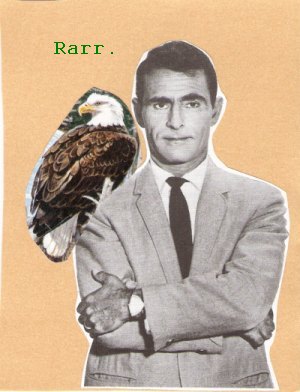
Lately, I feel like a beacon of film knowledge/news, etc. Between listening to two film podcasts (Filmspotting & IFC), averaging 5 films watched at home per week, checking Criterion and Electric Sheep websites on the occasion, and of course actually going to the theatre when I've got some cash, I realize that it may be necessary or perhaps even responsible to unload some of my movie-obsessed brain...
In Theatres
So I saw the new Indiana Jones film. It was inevitable. Having grown up watching the original trilogy, I already knew to tamper my expectations. That being said, I think the film is a mostly fun summer blockbuster extravanganza, but it had plenty of groan-inducing moments (I'm looking at you CG prairie dogs, swinging vines scene, wedding). I give it a C+ or 3/5...take your pick
(I did see the preview for The Dark Knight, and I have to admit that it looks pretty good..good enough for me to get interested in the last Batman movie to potentially catch up)
In Home (films I've watched in the last week)
Elevator to the Gallows (1958) Malle - I had already seen this movie once before, but had couldn't remember if I had, as I am apt to do. Once the film started, parts started coming back to me. A man kills his boss/lover's husband, teenagers go on a joyride, the police have a lot of murders to solve, all soundtracked by Miles Davis. 5/5
Ikiru (1952) Kurosawa - A story about a man who gets diagnosed with stomach cancer, essentially has six months to live, and realizes that he has lived an empty life. After a failed attempt to drink himself to death, he changes his strategy and instead decides to try and fit much joy and purpose into the time he has left. Sounds depressing and cliched, but actually works well. 4/5
Mona Lisa (1986) Jordan - Bob Hoskins stars in this film about a lower class dude who gets a job driving for a skinny, beautiful, classy black prostitute. She wants to rescue a friend that she knows from her past who shared the same pimp, but knows she cannot show her face for fear of retaliation from said pimp. Hoskins offers to find the friend and gets more involved with the underbelly of London than he would have liked. Cool scenes of 1980s London and Brighton. 4/5
Rififi (1955) Dassin - Essentially a heist movie, but the heist happens halfway through the movie (and it's a really impressive nearly silent 30 minutes). Things really get interesting after the burglary when a rival kidnaps one of the participant's young sons, and proceeds to mess with each of the people involved, except for the leader of the group (who is just too good to get captured). I love how the film starts to feel more chaotic as more shit in the plot gets more complicated (especially the car scene towards the end). 5/5
Scanners (1981) Cronenberg - Heads blow up! Epic mind battles! Humans vs. the machine (or science)! I think Cronenberg was best when he made out-of-control, not really believable campy, culty, B-movie craziness. I laughed a lot, and overall just really enjoyed seeing this movie for the first time. 4/5
Viridiana (1961) Bunuel - A young woman is about to enter a convent, when her aging uncle invites her to visit him one last time before she becomes cut off from the world. She goes reluctantly, and sure enough he begins plotting to mar her purity and innocence. Events occur and she decides to stay, but uses part of the land and the house as a commune-like setting to serve the homeless in the village. The homeless party in the mansion is pretty memorable. 4/5
the White Sheik (1952) Fellini - A newlywed couple goes to Rome for their honeymoon where they are supposed to meet up with the husband's relatives and meet the Pope. The new bride is quite young and obsessed with a character named the "White Sheik" whose headquarters happens to be down the street from their hotel. She goes to meet her idol and ends up travelling outside of Rome with the entire cast, on accident, and has no way of telling her new husband where she has disappeared to. An early Fellini that still captures some of the carnival feeling of his later films. 4/5
A Woman is a Woman (1961) Godard - I didn't actually watch this film last week, but close enough. I love Anna Karina in this silly, very poppy, very French film from Godard. Angela (Karina) really wants to have a baby, but her boyfriend doesn't want to so much. They fight a lot and he jokes that she should hook up with a mutual friend of theirs. Basically this film seems to be poking fun at the too-cute 1960s films about relationships, but is essentially one of those films. It's quirky and fun, and the striptease is pretty great. 5/5
In the News
Cannes just ended, and the two films that seem to be getting the most coverage are a 4 hour movie about Che Guevara by Soderbergh (while it's unlikely the final cut will be 4 hours, it would maybe do some good for the abundance of Che-T-shirt-wearing college students to sit through something like this just so they may actually know who the person on their shirt is..) and the directorial debut from the screenwriter Charlie Kaufman, Synecdoche, New York.
Jim Jarmusch is listed as having a movie in post production called The Limits of Control.
Werner Herzog is remaking Bad Lieutenant. I am concerned because Nicolas Cage appears to be replacing Harvey Keitel...until then, his latest documentary Encounters at the End of the World should be released on DVD sometime soon. It's about Antartica and will hopefully include Herzog narrating some outrageously melodramatic monologue over incredibly beautiful landscape shots.




